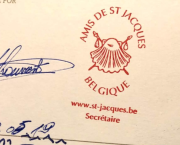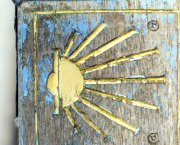
Deleted
 13 min
13 min
Deleted
‘They wake, they work, they wait,
Then they fall,
Like the gulls call to the shore:
Ro an mor, ro an mor. ‘
from ‘Seagift’
February 2020 had been the hardest month, not through cold, no, but from the warnings sent in by the Atlantic. Even as March came, wet slate still glistened on the terraces each morning. I had postponed my journey long enough. So, on Tuesday 10th March 2020 I headed west to Newquay on the Great Western Railway.
Outside Plymouth, a fine, misting drizzle blew in from the sea. The promised sunshine of the vernal equinox had not yet materialised. After the change of trains at 10:10am, onto the Newquay branch line, I crossed Cornwall to its northern shore. From Par onwards to Quintrell Downs yellow gorse bushes were already in bloom. The









 English
English
 Français
Français
 Deutsch
Deutsch
 Italiano
Italiano
 Español
Español



 Contribuer
Contribuer








 Tu peux soutenir les auteurs qui te tiennent à coeur
Tu peux soutenir les auteurs qui te tiennent à coeur






Alexia Monrouzeau il y a 3 ans
Thanks for the reading experience...once upon a time I had the project to "make the Denton Welch's travel" across England...maybe one day...
Alexandre Leforestier il y a 3 ans
Oui, c’est ecactement cela ! Bravo ;-)
Charles Mansfield il y a 3 ans
Alexandre - thank you so much. This is an inspiring digital environment. It makes me want to write more. You've met Patrick Modiano!? I am in awe. I love his novels. I read and re-read the later ones. Thank you again for establishing this platform. - Charles
Alexandre Leforestier il y a 3 ans
Thanks a lot for your trust and good vibes ! Yes, I recorded music with jazz artists aroud old French songs then Patrick loved the project and wrote about the project to help us :
The title of the album was “ Chansons sous les bombes “ De Chassy / Yvinev / Minviellle published by Bee Jazz Records
Charles Mansfield il y a 3 ans
Oui, j’ai trouvé une référence enfin : Livret de 16 pages
Textes en français (avec traduction anglaise) : introduction manuscrite de Patrick Modiano.
It must be a very collectible booklet now! Charlie
Alexandre Leforestier il y a 3 ans
In the past I worked a little bit with Patrick Modiano when I was a music publisher ;-)
Alexandre Leforestier il y a 3 ans
Wonderful ! I share your publication in my network ;-)